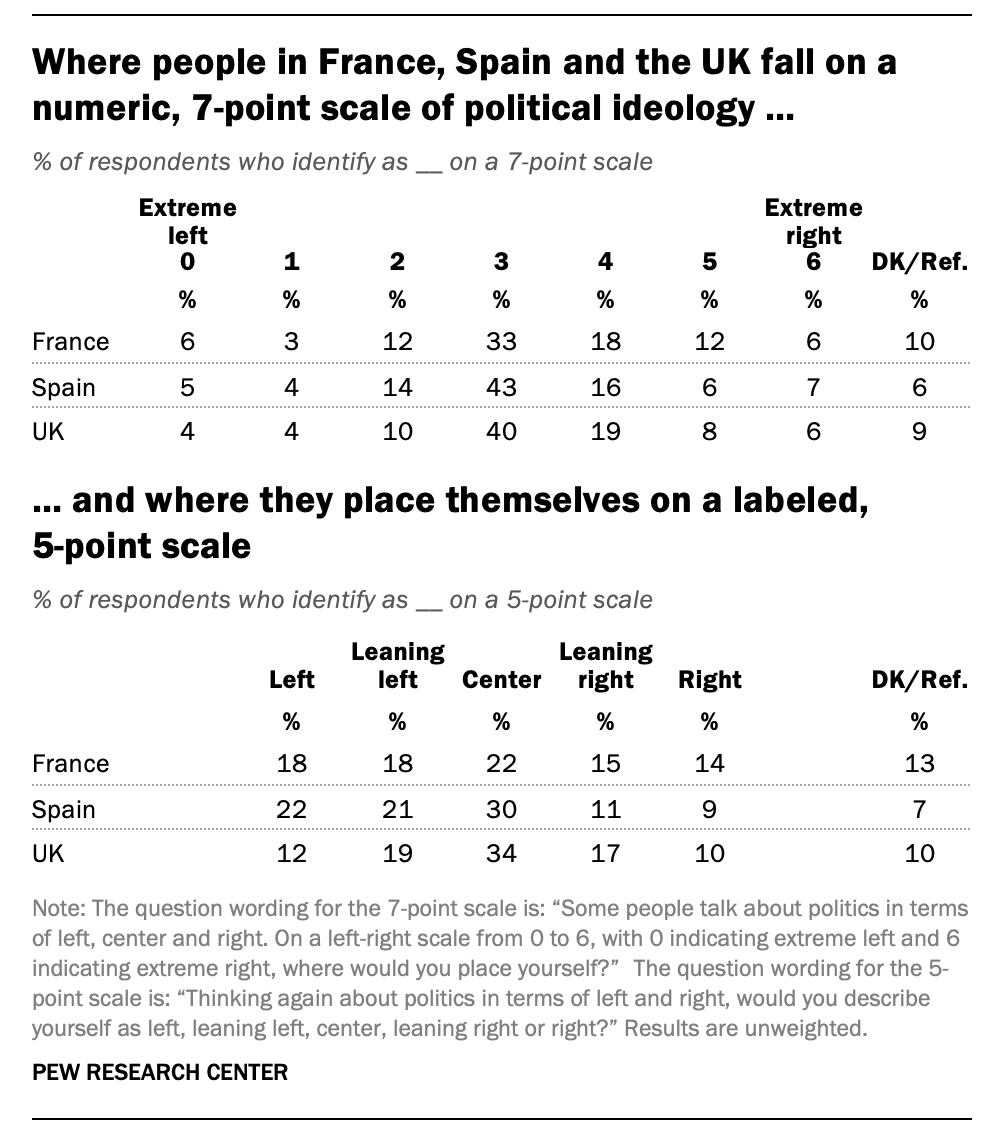At Pew Research Center, survey questions about respondents’ political ideology are among the most important measures in our comparative, cross-national surveys. Our recent research in Europe, for instance, explored how political polarization in the region shapes long-standing debates about domestic, social and economic policies.
To measure political ideology, our international questionnaires typically ask respondents to place themselves on a 7-point scale with two labeled endpoints (or anchors) — “extreme left” and “extreme right” — along with numbers for all of the points in between. However, some research suggests that it’s easier for respondents to understand a fully labeled scale, one that includes descriptions for the interior points as well, such as “leaning left,” “leaning right,” or “center.” In this post, we’ll describe a survey experiment we conducted to find out if two approaches to measuring the same concept align with — or diverge from — each other.
Findings at a glance
Our survey experiment was part of nationally representative telephone surveys we fielded in France, Spain and the United Kingdom in the spring of 2018. (You can read about an earlier experiment related to survey scales in this Decoded post.)
The 2018 surveys asked about political ideology in two ways. First, midway through each interview, respondents were asked the Center’s standard ideology question using a 7-point numeric response scale with only the endpoints labeled. Then, after several more questions, respondents were asked to describe themselves using a fully labeled, 5-point scale.

Here are some of the trends we observed across all three countries:
· The most common response option for both scales was the midpoint, though a greater share of respondents chose the midpoint on the 7-point scale (“3”) than on the 5-point scale (“center”).
· More respondents identified as right of center on the 7-point scale but left of center on the 5-point scale.
· Respondents were more likely to choose the endpoints on the 5-point scale than on the 7-point scale, and this was especially true for those on the ideological left.
· Levels of item nonresponse (either “don’t know” or refusal to answer) were similar using both approaches.
#polling #research-methods #survey-research #surveys #political-science #data science
